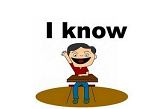In reference to my last blog, I want to address the “lesson plan book.” The greatest invention since popcorn for homeschool parents, of course! This book helps keep you organized, keeps you on track, and doesn’t have to be detailed. When you write down your lesson plans make it simple and to the point. Most lesson plan books consist of pages labeled Monday through Friday and some additional pages usually created for a large classroom. I use the Monday through Friday pages and use additional pages for notes. Easy ways to use the Monday through Friday pages are to label them with the subject areas you are going to teach. Under each heading, write your lessons in pencil so they can easily be changed if needed. (Remember homeschoolers are flexible.) Below is an example of how I write my lesson plans. I’m a visual learner and for me it’s easier to see it than to read about it.


Unfortunately, because the lesson plans are written in pencil, they are difficult to see.Just click on the photo and that will enlarge it. I hope it gives you an idea of how simple your plans can be and you can still get the job done! I also wanted you to see that the plan book itself is not expensive and can be purchased at most bookstores.



